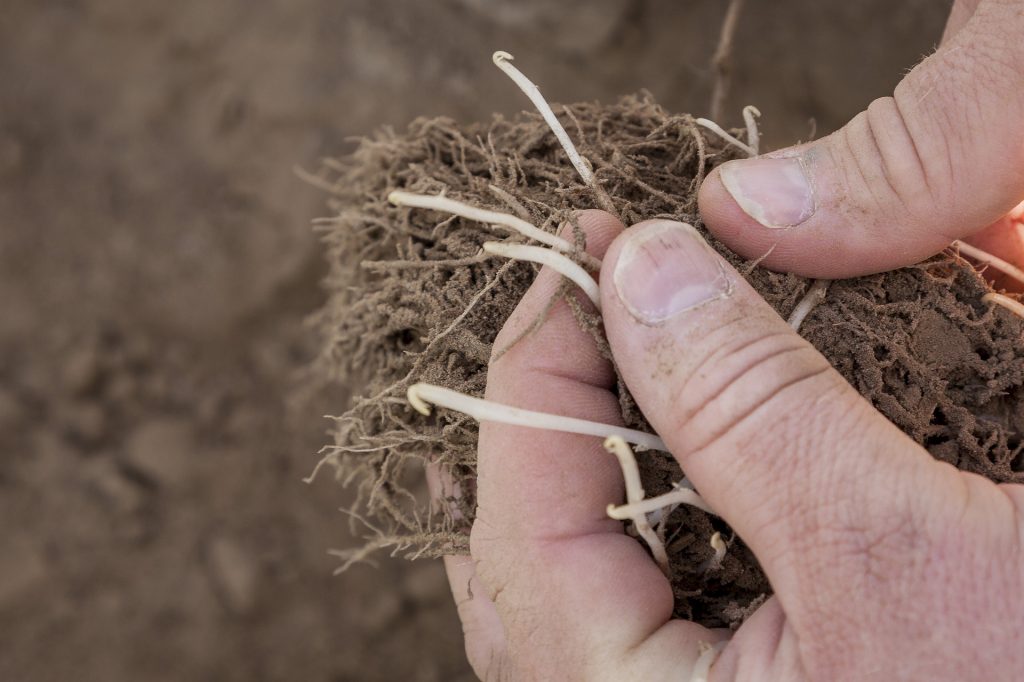Advice on how you can take action against this global plague
“What shocks me isn’t the rich or the poor but the waste”
Mother Teresa, Saint (1910 – 1997)
Whilst food waste isn’t a new phenomenon in western societies, in the last ten years, it’s become a subject at the heart of the debate around global food security and the durability of the global food network.
The environmental, economic and social consequences of food waste have been brought to light and raise ethical and moral questions about the equality of access to food across the world and the impact of our food system on the Earth’s natural resources.
The numbers are scary. One third of the global food supply destined for human consumption is wasted whilst, at the same time, 1 billion people in the world are starving. In Switzerland, around 2.3 million tonnes of food is wasted every year. This is the same as filling 150,000 rubbish trucks which, when lined up one behind the other, would make a line as long as the distance from Zurich to Madrid (source : savefood.ch)
Switzerland imports 50% of its food and consequently contributes to the pressure on the price of the raw materials across the world. This makes it more difficult for poorer countries to gain access to food.
Food waste also has an impact on the environment, the soil, water and the climate. As agriculture is responsible for over 30% of environmental pollution, food waste adds a heavier burden to an already pressured system. Often, the poorest in society are the most affected. According to the researchers João Almeida and Claudio Beretta, 10% of Switzerland’s environmental impact is due to food waste.
In summary, food waste contradicts all the ethical rules. It’s the expression of a contempt for life, the work of farmers and nature which provide us with this food. It reduces living organisms, be it plants or animals, to the status of a merchandise that is exploited to produce more and produce quicker.

It’s during the Christmas holiday season that food waste culminates. We have a tendency to buy too much in expectation of family gatherings. As the festive season is approaching, here are some simple tips to put an end to the saying “better too much than not enough”.
Before doing the food shop :
- Plan your meals for the next few days.
- Work out how many people will be eating each meal.
- Check the cupboards and fridge to see if there are any perishables or open things to finish up.
- Plan meals that will use up these ingredients and write your shopping list with any missing ingredients for those specific, pre-planned meals.
At the shop :
- Stick to your shopping list which was prepared according to your real needs. With a shopping list, you shop in a targeted, thought-out manner and avoid food waste from the start. You also waste less time and money because you only buy what you need.
- Buy more often instead of buying a large quantity at the same time, especially for fresh produce.
- Only bulk buy if you’re sure that you will use it all before it goes off. Think carefully before buying the special offers which are designed to make you buy more than you need.
- Buy loose items without packaging in your own containers where you can take the exact amount you need. Another bonus of buying in this way is that it avoids packaging waste !
- Choose to buy locally and directly from the supplier (at the farm, at the market) where you can find “wonky” fruits and vegetables that can’t be sold in the big supermarkets. In buying these products with slight imperfections, you are helping to reduce the amount of food wasted in the agriculture and supermarket supply chains. Fruit and vegetables with a slight mark, twisted or with an “original” form are also completely edible and flavoursome, their quality is second to none.
- Buying locally also avoids the waste due to the transportation and stocking of food.
- Check the best before and use by dates on foods.
- Buy fridge and freezer food at the end of your shop and use a cool bag to store it in until it gets home
Once back from the food shop:
- Put the food with a longer use by date at the back of the fridge and those with an earlier date at the front of the fridge.
- There are several dates on food packaging. Making sure you know what they mean allows you to eat safely without needlessly throwing away food that is still safe to eat. Here’s what you need to know :
- “Use by” : This is an important label that gives information about if food is safe to eat. This date tells you until when a product is safe for consumption provided it is stored correctly. Food safety laws mean that this date has to be given for perishable food such as fish or meat. Tip : Make sure you eat these foods before or on this date and avoid buying more than you need. If you don’t think you can eat them in time, cook them before the date and then freeze them for later.
- “Best before” : This is a date that guarantees the quality of the food and is given by the manufacturer. It is an indication of how long a product will keep its specific characteristics if stored correctly. Most products can be stored and used beyond this date. Once the best before date is reached, the taste or consistency of the product may be slightly different. You can, however, eat it after this date without any risk to your health.
- What about food items without a date ? Certain types of food don’t have to have an expiration date. The manufacturers can decide if they put on one or not. This is often the case for fresh fruits and vegetables, vinegar, salt, sugar, some drinks (often alcoholic) and bakery (normally to be consumed within 24 hours of buying them). Either these foods deteriorate so much that you know simply by looking (fruit, vegetables, bread and patisseries) or they don’t spoil. Sugar and salt are examples of the types of food that can be preserved almost indefinitely.
- What to do with food that’s passed its date? Use your common sense and your senses; observe, smell, taste. The colour and the texture of the food or the state of the food packaging can tell you if it can be eaten. People at risk (pregnant women young children, elderly people, those who are sick) should stick to the dates for refrigerated goods. If the food packaging has inflated (except at altitude) or if it has mould on it, it should be thrown away.
- What dates to keep to?
Products that are sensitive to a « use by date.. »
| Meat, precooked food, cut salad | Stick to the date if possible |
| Minced meat, poultry, fish, seafood | As soon as possible. Stick to the date rigorously |
| Ham, paté, terrine | Once open, consume within 2 or 3 days. Respect the date. From 2 days to 1 week after the date |
| Fromage frais, pasteurised milk | From 2 days to 1 week after the date |
Non- slightly perishable foods « best before date »
| Yogurt, butter | From several days up to 2 weeks after the date, sometimes longer |
| Dried meats, hard cheese | Up to 2 weeks after the date |
| Eggs | Up to 2 weeks after the date: Cook well |
Long lasting food « best before date »
| Dried pasta, rice, semolina, flour, coffee, spices, vegetable oils, mustard, sugar, salt, vinegar | If there’s no sign of it going off, there’s no limit : check the texture (not wet or stuck together) as well as the taste and smell (without a smell of mould, no dust or insects). |
| Products in jam jars, bottles or tetra packed | Several months or years after the date : check that the package isn’t damaged (inflated, rusted, broken or open) |
| Biscuits and chocolate | Several months after |
| UHT milk | Unopened, up to 1 month after the date |
| Frozen | Several months after |
When cooking
- Before cooking a new meal, finish up any leftovers from other meals! There are many recipes on the internet based on using up leftovers. www.swissmilk savefood.ch
- Think about using up older fruit and vegetables in soups, compotes or even use dry bread to make croutons, breadcrumbs, eggy bread or an oven bake with bread and vegetables. Recettes | Carouge Zero Dechet
- Work out the quantities needed : When you’re used to cooking for a family, it’s difficult to know the quantities necessary for 8,12 or even 20 people. Even more so when a festive meal includes more dishes (apero, soup, starter, dinner, dessert) and when you’re cooking for people who you may not necessarily know their food preferences or their appetite. For Christmas dinner, we recommend 600 to 700g of food per person (with all the servings included). Over the course of the meal, this can amount to roughly (per person):
- For the aperitif, 4 to 6 canapés;
- For the starter 75 g of meat 100 g of cooked fish or 100 g of a vegetarian starter;
- For the main course : 75 g meat or 100 g of fish. If you’re cooking a vegetarian dish, increase the quantities to 150 g à 200 g of cooking vegetables, 50 g of rice (dry weight);
- If you have a cheese platter 30 g – 50 g of cheese and 30 g -70 g of bread ;
- For the dessert, 100 g à150 g.
- And for the children ? Careful, children generally eat less than adults but teenagers eat ….more!
- Because it’s a festive season and you want everyone to have something they like it’s a good idea to have a bit of variety. For example; several accompaniments, cheeses, types of breads. You can adapt the quantities according to the number of dishes you wish to serve: if there are 10 people, it’s recommended to serve 2kg of vegetables as an accompaniment. But if you have a choice of 3 vegetable dishes, you only need to make 660g of each NOT of 2kg of each “in case everyone wants the same and there isn’t enough”.

During the festive meal
- Allow everyone to serve themselves so that they can choose the amount they want.
- If you serve the meal directly on the plates, don’t serve too much. People can always come back for more. If everything is served onto plates, it often ends up in the bin whereas anything leftover in the serving dishes can be saved for another meal.
- Avoid mixing all the salad. A salad with a dressing already on it, doesn’t preserve very well whereas a salad without the dressing (even cut and washed) can stay fresh for several days.
- Even though you’ve tried to reduce the amount of leftovers, if there are any, invite your guests to take some away with them.
After the festive meal
Save the leftovers : You can keep the leftovers or opened foods, cooked or not in the fridge or freezer. To preserve the food well :
- Put them in a clean, airtight container. Avoid keeping it in the serving dish because these dishes are often too big, don’t close and have been touched by everyone during the meal.
- Put the leftovers in the fridge or freezer as soon as possible to avoid food poisoning. Ideally less than 2 hours after cooking or opening food, it should be placed in the fridge or freezer. –
- If necessary, you can already portion out the leftovers and put the date on the container (especially if freezing it). Finally, if you realise that you bought too much at the shops and you haven’t opened the food, lots of things can be frozen : whipped cream, butter, cooked vegetables, fruits….
The party is more than a meal
The festive, end of year meal is important. It’s often at this time that loved ones get together. However, it’s not a reason to spend the whole night around a table eating a gigantic meal. You can create festive rituals that break up the meal: take a photo of the family (serious and silly), share happy memories of the year. Preparing the meal together is also a way to spend quality time together or add a board game into the fun. If you are less full from the dinner you can more easily make the most of the evening all together 🙂
Bon appétit and happy holidays !

